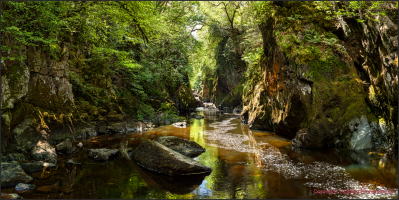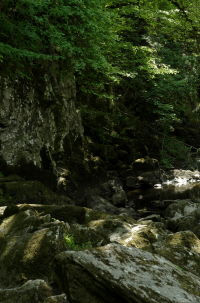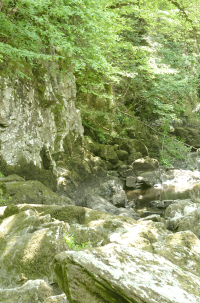raptor3x said:
Sporgon said:
jrista said:
You CAN preserve the highlights, and still have better shadow tonality, than with a Canon camera. I mean, we are talking about total tonality of around 2100-2400 tones on a Canon, and anywhere from 7300 to 8100 tones or more on Exmor-based cameras. The entire tonal range of a Canon camera can fit within the shadow quarter of the signal on an Exmor...I mean, think about it: 8000/2000...if you consider the bottom quarter of the signal to be "the shadows", you could fit an entire Canon exposure in the shadows of an Exmor, and have the same tonality. Earlier highlight clipping? Saturation falloff? That's a total misnomer. You have GOBS more tonality in an Exmor signal than a Canon has in it's entirety, and you have as much tonality just in the shadows as a Canon has in it's entirety. There is no such thing as early highlight clipping or blue saturation falloff with an Exmor...
That sounds so impressive.
You'll be able to see that 8000 / 2000 difference here then.
Just to reiterate, because you may not have caught it, jrista was confusing dynamic range with tonal range. You can't just take 2^(# stop DR) and say that's the number of tones the camera can represent. Dynamic range represents the ratio between the lowest and highest tone that can be represented, but the actual number of tones that can be represented within that range is dependent on the quantization of the signal into discrete levels, which is in turn dependent on the standard deviation of the signal as a function of intensity. Just as an example, no current 35mm camera is anywhere close to being able to represent 8000 levels of grey in a single shot. The D810 would be closest with up to 910 tonal levels at ISO 64. To compare that with the 1DX, the 1DX has up to 648 tonal level at ISO 100 (the D810 has 792 at ISO 100). Comparing the 1DX and A7S at ISO 12800, the 1DX has a potential of 77 tones while the A7S has up to 84 tones; certainly an improvement but not the revolution jrista implies (at least not in terms of tonality). The real strength of the A7S is how amazingly well it preserves color and detail at high ISO, much better than the 1DX once you get above ISO 25600.
Could you please clarify your calculations on numbers of possible tones values?
This does not seem correct to me.
Here some basic math from theory of signal detection:
In general possible number of detected tones has limit of number of quantization levels if signal noise is going to zero.
Each quantizatin level is a decision slot for assigning digital value to the received analog signal at the input of ADC. For 14 bits ADC there are 16384 possible representatin of input analog signal. In theoretically ideal situation (with zero input analog signal noise) there are 16384 possible tonal values that could be assigned to received input analog signal.
Now when we come to real systems with noise (regardless of the noise origin) we have fundamental thing which is called SNR which affects precision of the signal detection - in our case to which tonal slot signal will be assigned. More signal noise more probability that signal will be assigned wrong digital value. Roughly if 99% of the signal energy is within particular decision slot ( in the center of it) then there is possibility that there is 99 percent probability that signal will be assigned correct value and 1% that that will be assigned value from adjucent decision slot. For image sensor this will result in 1% variations in image tonality signal with given noise level and noise distribution pattern. If signal value is on boundary of decision slot with the same conditions as above than there will be 50/50 distribution for output value assignements. This is actually why possible tonal values are less than ADC quantization levels.
This is actual limitation of one dimention signal detector when only signal amplitude modulated with noise is taken into account.
So overall all depends on number of signal detector decision slots and intensity and distribution pattern of the signal noise and actual signal level at the input.
If majority of signal noise power spectrum width becomes wider than width of the decision slot than this is where we would see that number of the possible correct tonal numbers would be reduced.
Also errors in signal values assignmets would be more frequent for lower level signals - this is just signal detector SNR function for two input noise varàibles - read noise and photon noise in our case.
I do not think we need to go more deep into that. These are just basics.
So according to all said above Jrista calculations seem correct to me.
If you can actually prove that this is different and Jrista is not correct somewhere I àm really interested to see that.



